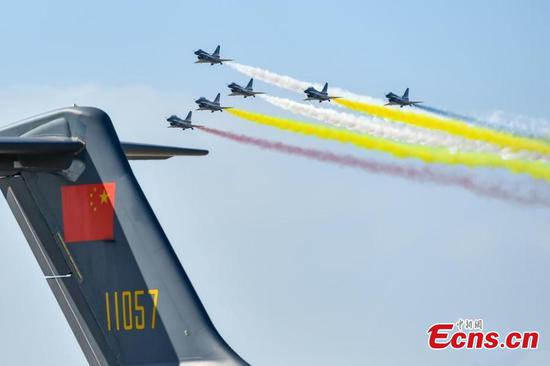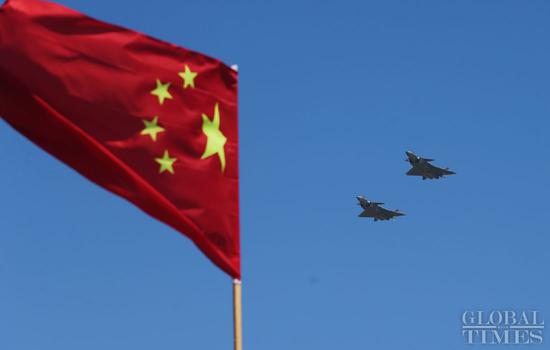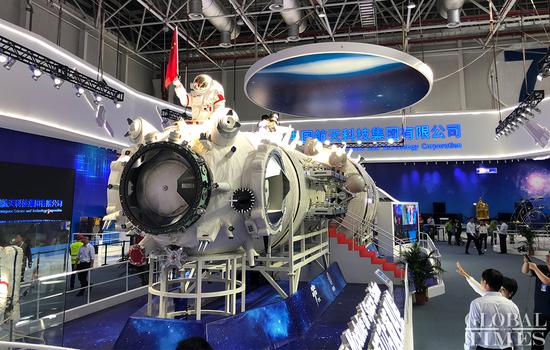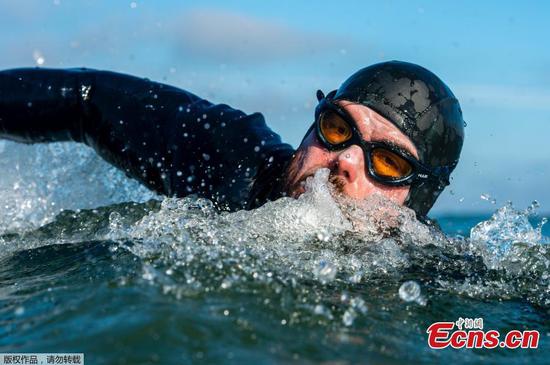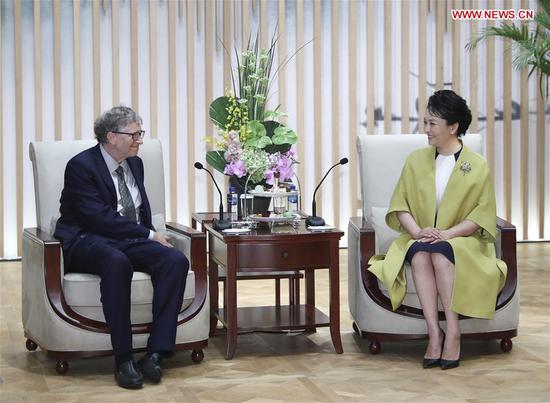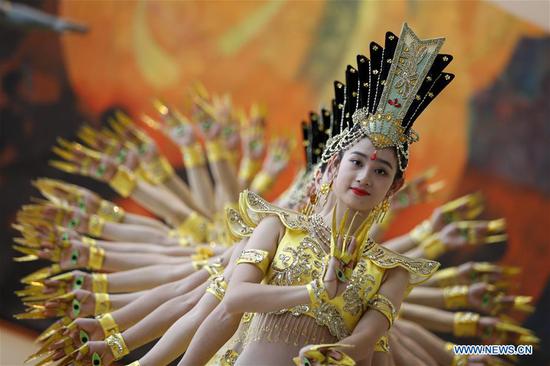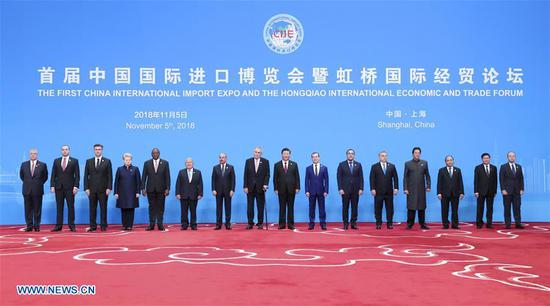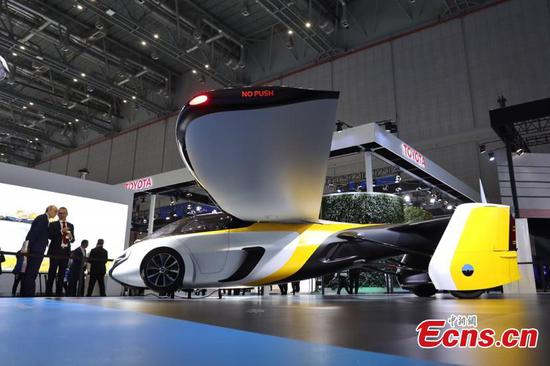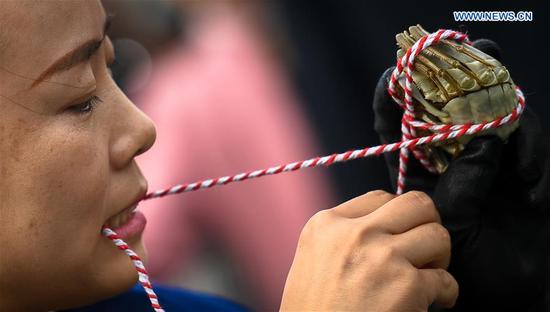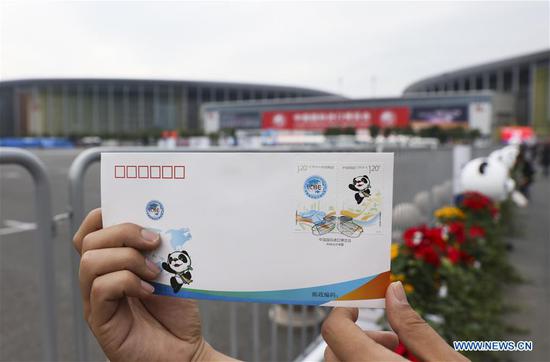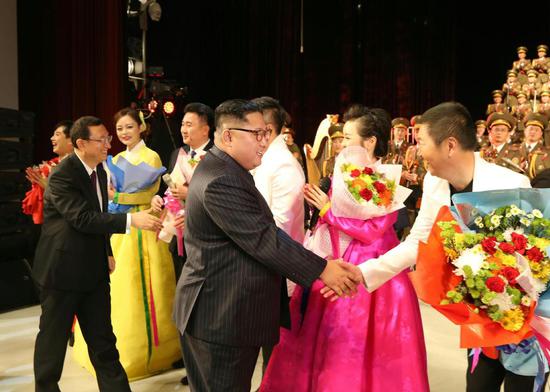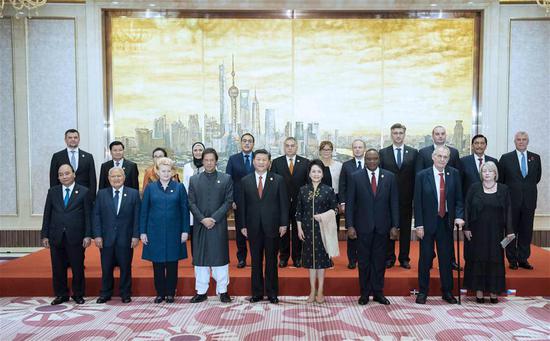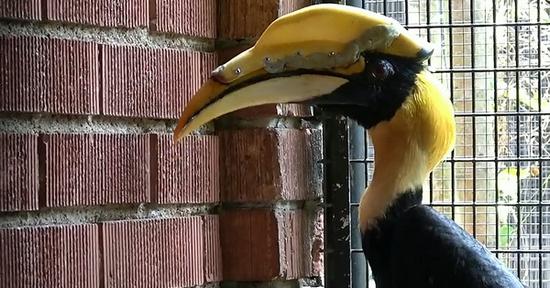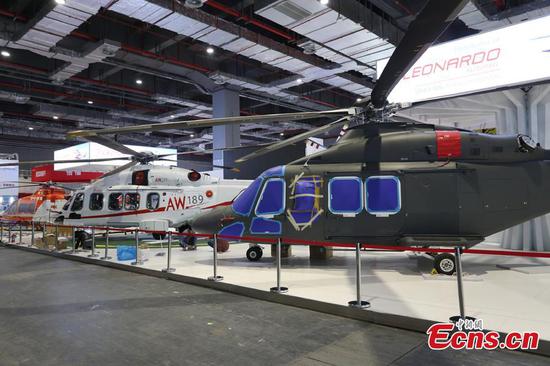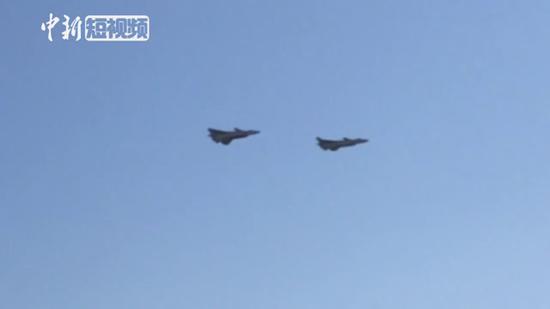
China's J-20 stealth fighter jet displays its new coating of stealth material and flies over the exhibition hall at Airshow China 2018 on Tuesday. (Photo: Cui Meng/GT)
China-made thrust-vectoring engine offers combat advantages
A pair of Chinese fighter jets - the J-20 stealth fighter and a thrust-vectoring J-10B demonstrator aircraft - put on an impressive demonstration at Airshow China 2018 on Tuesday, confirming that the country's military aviation technology is advancing at a greatly accelerated pace.
Three People's Liberation Army (PLA) Air Force J-20 jets wowed 20,000 spectators by performing numerous dazzling maneuvers during their 15-minute performance in Zhuhai, South China's Guangdong Province.
PLA officers, foreign military officers and experts, representatives of Chinese military industrial companies, journalists, aviation buffs and local residents let out an audible, collective "wow" as the jets roared past the viewing area near the exhibition hall.
The J-20 was first shown in public at the previous Airshow China in 2016, but only two of them appeared for less than a minute.
The jets were sporting a new camouflage look. Wei Dongxu, a Beijing-based military expert, told the Global Times on Tuesday that the J-20s now have "a combat uniform" that provides improved stealth capability.
The J-20's longer demonstration flight this year also proves that the PLA Air Force is confident to show the public that it has mastered the flying techniques of its most advanced stealth fighter jet, Wei said.
Following the J-20s demonstration flight, the fighter's chief designer, Yang Wei, said the jet's superior "flight performance is quite obvious." He made the remarks at a press conference sponsored by his employer, the Aviation Industry Corporation of China (AVIC), the manufacturer of the J-20.
Yang said the full capability of the stealth fighters will only be known after they engage in actual combat.
J-10B's Pugachev's Cobra
A J-10B demonstrator fighter aircraft powered by a China-made thrust-vectoring WS-10 Taihang engine also produced a collective "wow" from the air show audience.
It made a series of impressive maneuvers, including Pugachev's Cobra, a dramatic and demanding maneuver in which an airplane flying at a moderate speed suddenly raises the nose momentarily to slightly beyond the vertical position before dropping to a normal horizontal flight. It uses engine thrust to maintain a near constant altitude throughout the entire move.
The maneuver is named after the Soviet test pilot Viktor Pugachev, who performed it with a Su-27 fighter jet in 1989 at the Le Bourget Paris air show. The J-10B is the world's first single-engine canard wing fighter jet to perform the Pugachev's Cobra maneuver.
Although the J-10B is not as advanced as the J-20, many professional aviators in the audience told the Global Times on Tuesday that the performance of the J-10B was more impressive than the J-20s.
Other Chinese aircraft performing at the air show included the heavy carrier Y-20, fighter jets FTC-2000G and JF-17, and the civil airplane ARJ-2.
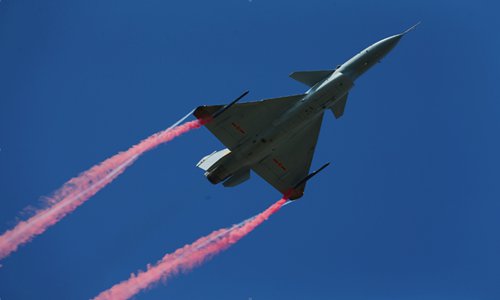
A PLA Air Force Lieutenant Colonel surnamed Zhang said that "in the past, the engine was a well-known weakness of Chinese fighter jets, since we relied heavily on imports, but the J-10B proves that China can build first-class, thrust-vectoring engines to power our advanced fighters."
If close-combat between fighter jets still exists in the future, high-quality thrust-vectoring engines will bring a significant advantage, Zhang noted.
Song Zhongping, a military expert and TV commentator, said that the J-10B is a demonstrator aircraft with a highly important mission as it's not only testing the thrust-vectoring WS-10 Taihang engine for J-10B, but also testing it for J-20A, an aircraft that is in development and yet to be revealed and is more advanced than the J-20.














